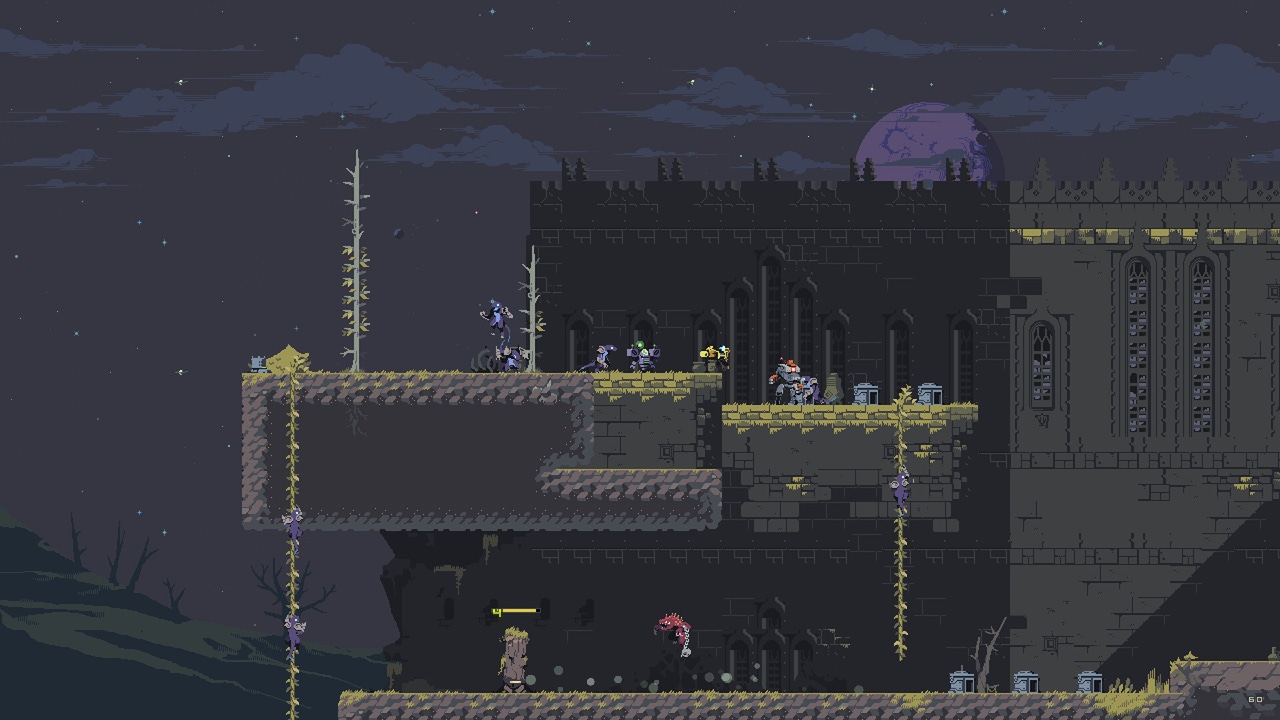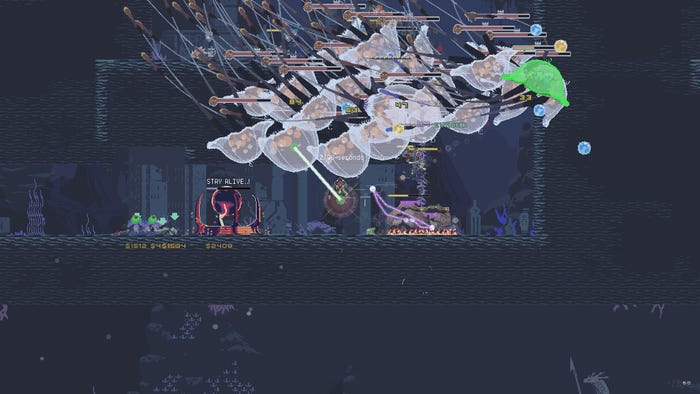Trending
Opinion: How will Project 2025 impact game developers?
The Heritage Foundation's manifesto for the possible next administration could do great harm to many, including large portions of the game development community.
Hopoo co-founder Paul Morse chats about the upcoming game and reveals why the series' future is reverting to its visual past.

A while back I did a Q&A with Hopoo Games about Risk of Rain 2, a 3D update of their 2D indie roguelite combat platformer Risk of Rain that I thought turned out very well. Over four years later, Hopoo Games is a rather different company now, but Risk of Rain remains; in fact, it Returns, bringing the series back to its 2D roots with updated gameplay, improved visuals, and new characters, items and enemies.
With the release of the new game this past November, it has been a hectic time at Hopoo, but Hopoo co-founder Paul Morse graciously did take a bit of time off to offer answers to most of my questions.
Who are you, and what is Risk of Rain Returns?
Paul Morse: I am Paul Morse, and I am the co-founder of Hopoo Games. I have worked on Risk of Rain, DEADBOLT, Risk of Rain 2 and most recently Risk of Rain Returns.

Images via Gearbox Publishing.
Risk of Rain 2 was 3D, and successful. Why go back to 2D, and why start from scratch, it seems like an oft-untaken direction?
Morse: Risk of Rain Returns was technically already being worked on during the same time as Risk of Rain 2 using the original games code as a framework. We also feel a strong attachment and fondness of 2D games so it didn’t feel like we were going backwards after the success of Risk 2, it just felt like shaking things up from a design perspective after working in 3D for so many years.
What would you say are the important differences between Risk of Rain and Risk of Rain Returns?
Morse: The biggest differences between Risk of Rain and Returns are the upgraded art, the stability and performance of the codebase and the matured feature set that a game launching in 2023 is expected to have. The amount of effort put into all of these things by the team is apparent, and players of the original game have really noticed the improvements all around.
Let’s get into the history of the Risk of Rain series. How did it start, and why do you think it became popular?
Morse: Risk of Rain started as an idea between Duncan and I during winter break in college. We tried designing our own game on paper and mapping out what it might look like if we combined elements from all of our favorite games into one, and that turned out to be Risk of Rain. In the beginning it really was just a game for Duncan and I to play together and enjoy and that made the creative process and decision making super smooth. As we showed it to more people and our friends started playing they thought it was fun as well and that’s when we knew we might be onto something. I think we focused on the moment to moment gameplay at its core and knew if we really nailed that people would enjoy it.

Images via Gearbox Publishing.
Back when we did a Q&A with Hopoo about Risk of Rain 2, the question came up about whether to use pre-made terrain or procedural. I seem to remember that the decision was for premade terrain, with randomized items and enemies. While I haven’t played RoRR enough yet to tell for certain whether it’s human- or computer-made terrain, it doesn’t feel like it’s generated by an algorithm. I imagine that the widely-varied abilities of the characters would make procedural content more difficult to use. Which is it, and why?
Morse: All of the Risk of Rain games use a similar system for terrain or playspace. The worlds or maps that you play on aren’t procedurally generated, they are hand-crafted by designers with all sets of monsters, loot types, and unlockables being curated but randomly placed into the map. We found this always felt a lot better than having something truly random, which at its best still can feel disconnected for the player.
The Risk of Rain games throw lots of items at the player, and most of them give the player a permanent, or at least long-lasting, benefit. It has the effect of making each game feel substantively different, but there’s often a danger, with this approach, that the player’s success is governed more by what they find than how they play. It seems to me that the Risk of Rain philosophy for combating this is that the game’s difficulty ramps up over time, becoming harder, so time spent finding and buying items comes at the expense of greater difficulty. Is that how you see it?
Morse: We have always tried to match and balance the amount of player skill and player luck it takes to be “good” at Risk of Rain games. A very skillful player could still beat the game with the “worst” or even no items, and a very new player could find themselves far into a run with a couple of really nicely timed item upgrades. Having a balance is good but also allowing and having those moments that you remember as a player are incredibly important to the fun of the overall game.
You can spend a lot of time hunting down every item on the map and making sure you pick everything up, but that will cost you in time and enemy difficulty. You can also choose to hit the Teleporter right away with very few items but could risk being underprepared for the boss fight. There are a lot of design decisions that the player can interact with and use to help shape the difficulty.
A lot of games that are intended to be played many times, including Risk of Rain Returns, use meta-progression, unlockable features like new characters, abilities or items that become available as the player accomplishes various tasks. Do you think that presents a danger of the player mostly playing to unlock the “real” game, with everything unlocked, at which time it’s most possible to complete it? In other words, is it technically possible to finish the game on a freshly-installed game? And as new elements are added in, especially unlocked items that are generated, how would you say the play experience changes? Are you concerned about fancy new items outnumbering and overwhelming solid defaults?
Morse: This is a great question because we thought about this a lot during development on all of the Risk of Rain games from the very beginning. We knew content would be unlocked over time, and that the player wouldn’t start with all of the types of content right when playing the game on a fresh install. We had to make sure that at its base, the game was fun from the very start. We didn��’t want to gate "all the fun content" behind unlocks or force the player to earn them over time. A lot of the unlocks in Risk of Rain Returns are meant to be unlocked while playing the game naturally and some are meant for the player to seek out and attempt to achieve using game knowledge. Having a good mix of these is crucial to the overall feel of the progression of the game.
You can absolutely "win" in Risk of Rain Returns on a fresh install, but that will be with a subset of the total content the game has to offer.
When adding in new items to the pool of potential items we were very careful not to dilute the pool. We had to think about each item that was unlocked to make sure it didn’t replace or make other items obsolete. We also tried to make sure that items that were unlocked later into the game weren’t strictly power upgrades, but oftentimes more complex game mechanics that we wanted the player to only be able to find after understanding more of the core game loop.
You May Also Like